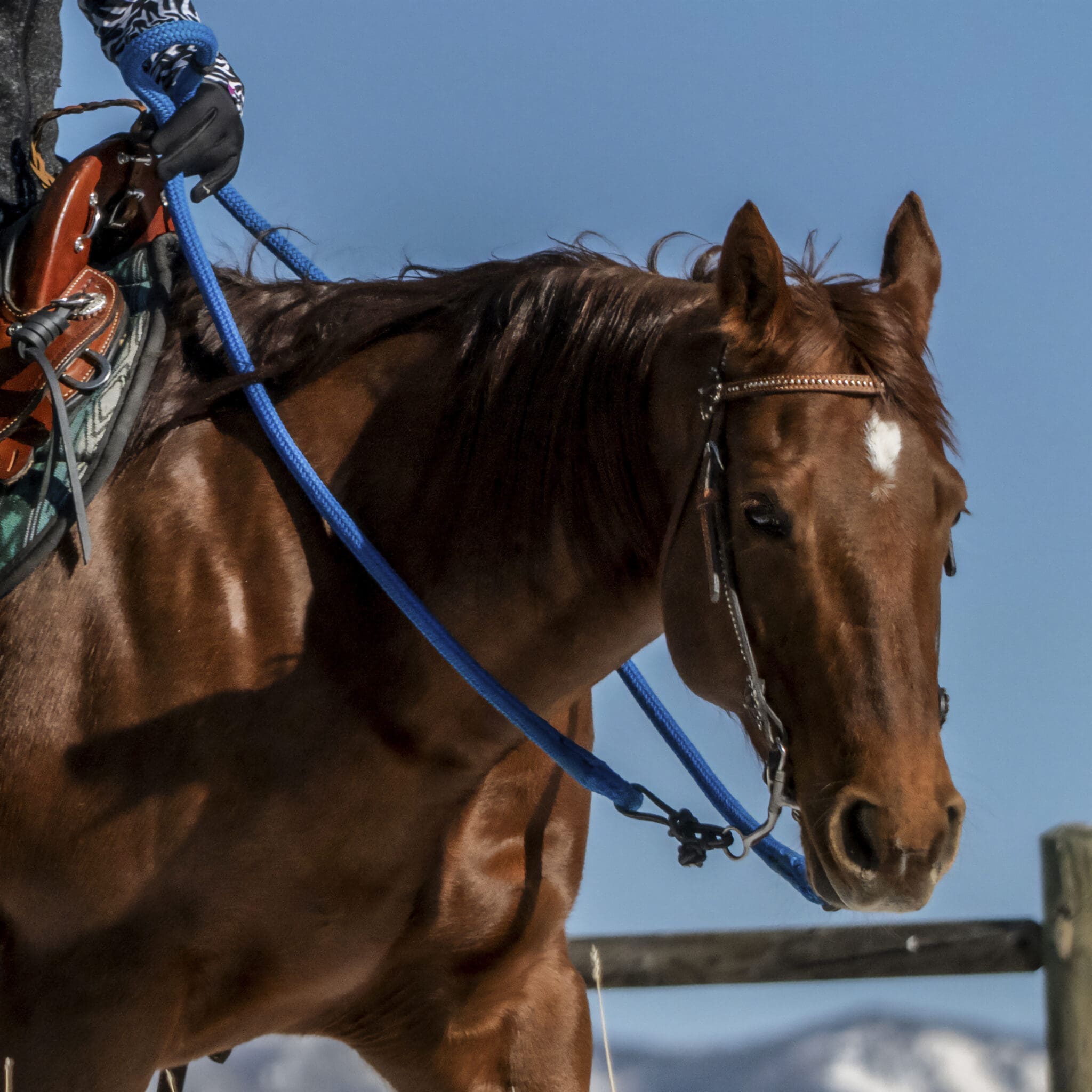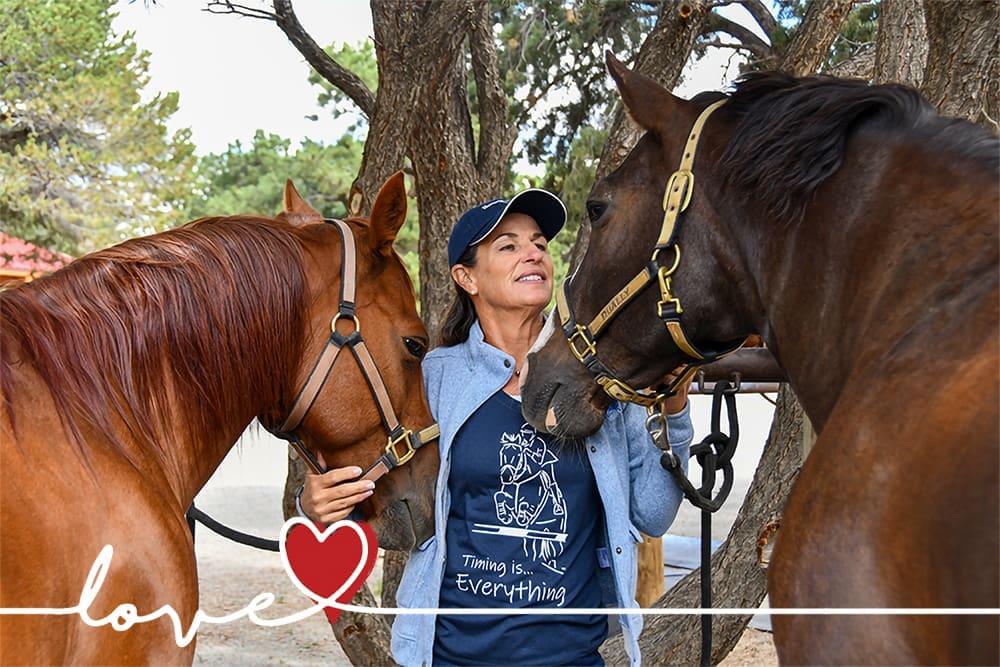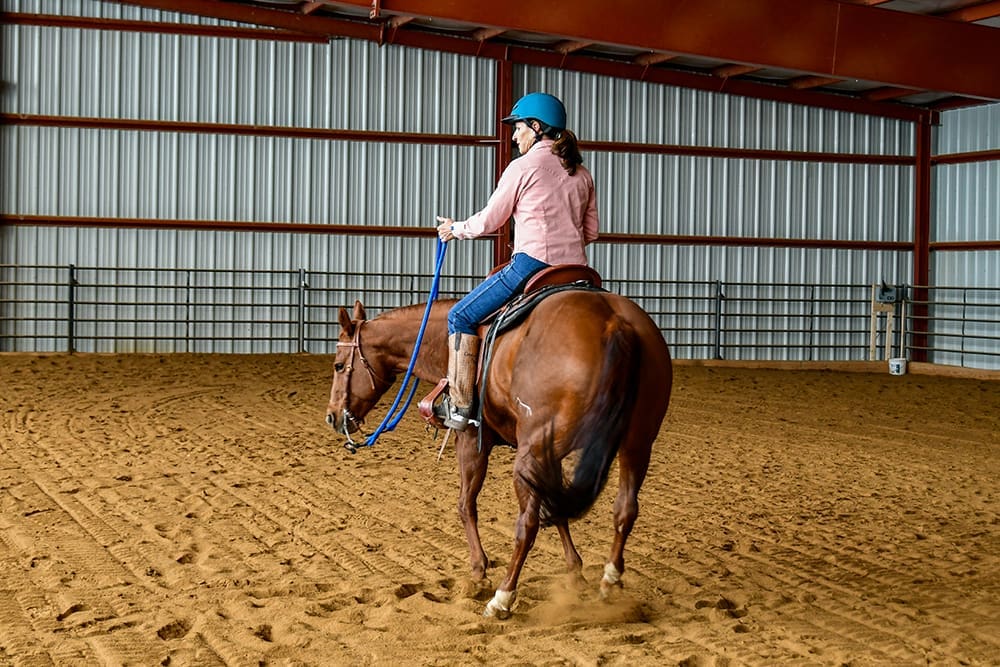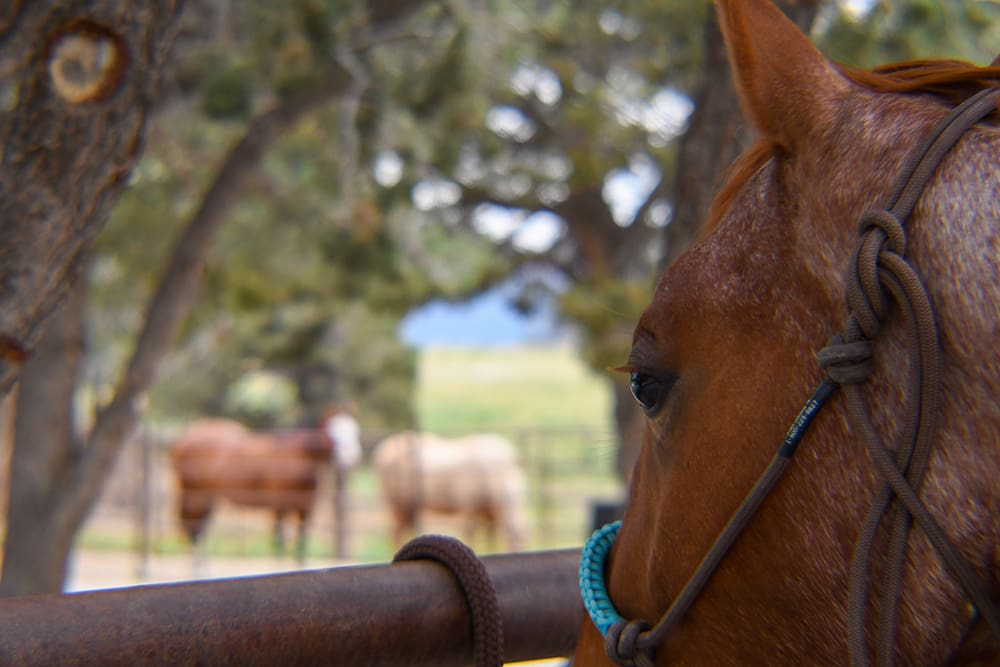Does your horse always cut the corners in the arena? Does he veer around little obstacles—such as puddles—even though you told him to go straight through? Do your circles become smaller and smaller as you ride, or are they oval instead of round? Are you constantly begging your horse to go back to the rail so that he ends up counter-bent with his nose to the rail and his hip to the middle? Does your horse dart into a turn right after you jump—instead of going straight until you ask him for a turn?
If you’re nodding your head, knowing the scenario describes you and your horse; it’s time to make a change. Here, we’ll discuss why your horse may act out this annoying and disobedient behavior then give you steps to take with your horse so that he goes obediently in the direction you dictate. Soon you’ll have a steady horse that acts like a champ and respects your authority.
The Reason
Riding a horse when you’re constantly struggling for authority is not fun and will lead to an increasingly disobedient horse. Furthermore, if you cannot control your horse’s direction and speed (see last month’s article about controlling your horse’s speed as you approach the gate) you’re clearly not the one in charge, leaving your horse with the authority to make decisions with which you may not agree.
To horses, authority (or dominance) is black in white. You’re either in charge of him or he is in charge of you. If you’re the absolute authority figure in his eyes, he’ll follow your directives without question. If you find yourself compromising or negotiating with your horse on issues like what direction he goes or how fast he
gets there, then you’re compromising your authority.
Often, us easy-to-get-along-with humans will let our horses get away with little things like cutting corners and dodging around mud puddles, instead of pushing the point and making him do exactly what we asked. From the horse’s point of view, this simply means that you do not have absolute authority and gives him license to do what he wants. Eventually, his behavior will deteriorate to downright refusal, being barn sour and even running off with you.
The Solution
First, realize that your horse’s “problem” stems from your lack of authority. It’s time to take charge. Your horse is taking unauthorized actions—testing you to see who commands the ship and sets the course. Any variance to the charted course that goes unanswered is further evidence that you’re not in charge.
Horses are trained to know that once they’re told to do something, they should keep it up until the trainer gives a new direction. Once I tell the horse to trot in a certain direction, he should continue trotting, at that speed and in that direction, until I tell him to speed up, slow down or turn. I should not have to tell him every stride to keep trotting and I should not have to constantly correct his direction. He should continue doing whatever I told him until I have told him to stop. If you’ve set a different precedence with your horse, it’s time to make a change.
If your horse looks up to you as the leader—the captain of the ship—then he’ll not question you or argue with your directives. To become the absolute authority figure in your horse’s eyes you’ll have to become 100% diligent about his obedience under saddle. The Captain does not command a course to his first mate, only to have him argue and then settle on a compromise.
Keep your eyes always focused ahead to the exact direction you intend to go and then ride there with precision. If you feel your horse vary in direction or speed, correct him immediately. To correct his direction, first make sure his nose is pointed in the direction you want to go then make sure his body follows, using your hands and legs as reinforcement.
When going in a circle or around the arena, rather than turn his nose toward the outside (thus allowing his body to drift inward), lift up and in with your inside rein, using the ‘indirect rein in front of the withers.’ To apply this rein aid, you’ll turn your inside hand, like you’re turning a key in the door, so that your pinkie comes in and up, thus creating an upward diagonal pull on the rein. Open your outside hand out to the side to encourage his shoulder to move in that direction. The indirect rein in front of the withers moves the horse’s shoulder away from the rein aid. Your inside leg at the girth or at the ribcage will encourage him to move his body with his shoulder. That way he’ll be bent in the direction of the turn but be moving his body to the outside, or opening the circle.
If you’re going in a straight line and your horse veers off course, you’ll need to correct it immediately—before he has completed the first unauthorized step. If he veers left, simply lift your left hand up (not back), in an effort to block the movement of his shoulder. At the same time, close your left leg on the horse—in the middle position, right where it normally hangs—to move his ribcage back on the trajectory you asked him for.
If you find that you’ve to constantly correct your horse, it means that either you’re not correcting him consistently or you’re not using enough pressure to motivate him to change. Remember that he is being disobedient when he makes an unauthorized decision like changing directions or speed. Don’t be afraid to increase the pressure of the correction (spank him with the reins, boot him on the shoulder with your foot, bounce your leg hard off his ribs) so that he is motivated to change and so that he has a reason to not want to get in trouble again.
It will help to challenge your horse on this subject, especially when you first mount. If you’re riding in an arena, make him go deep into the corners or even go straight into the corner, stop and turn around and go the other way. Don’t let him learn to make assumptions about where you’re going. He should only turn around the corner of the arena if you cue him to; and you should cue him to turn at each corner as you proceed around the arena.
If you’re riding out on the trail, point him right toward that mud puddle and make him walk right through the middle. Do not compromise—be the absolute authority figure and insist that he walk right through the middle. As you walk down the trail, focus on straightness and apply small corrections with your legs and hands anytime any part of his body veers. And by all means, insist that he keep his nose right in front of his chest—no looking around.
Other very useful training exercises can be utilized by putting some markers in your arena or riding area. Put a cone in the middle of each short end, so that you can walk in a straight line down the center from cone to cone. You’ll be surprised at how difficult it’s to keep your horse on a perfectly straight line without the guidance of the fence. This simple little exercise will show you a lot about how obedient and responsive your horse is and will show your horse that you mean what you say and that you expect him to do exactly as you say.
Once your horse understands that he does not have a say in the matter and that you’ll be diligent and persistent, he’ll cease the arguments and compromise and simply go where you say. What he needs most is your leadership and consistency.



